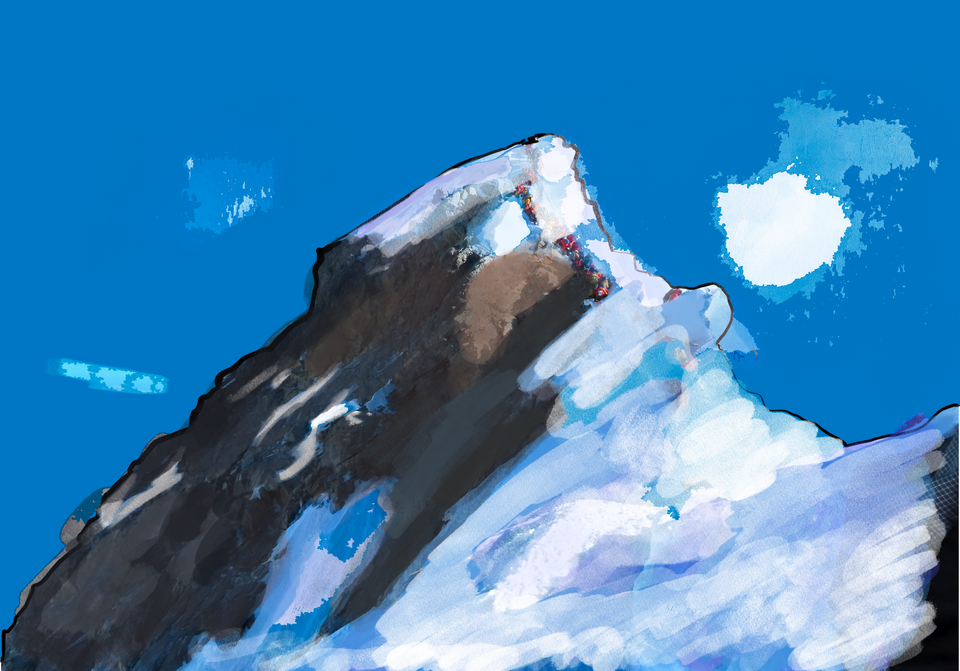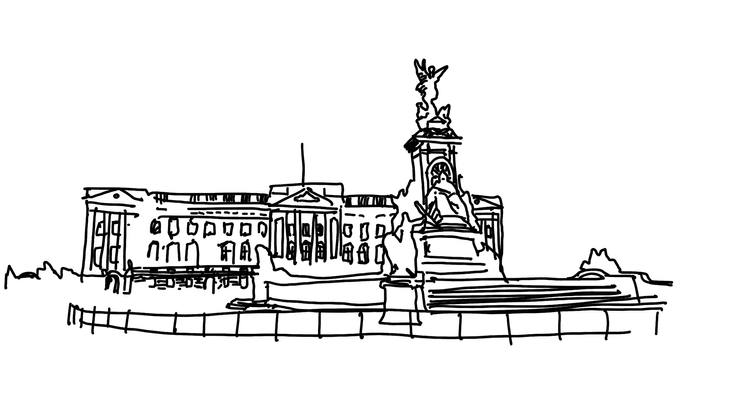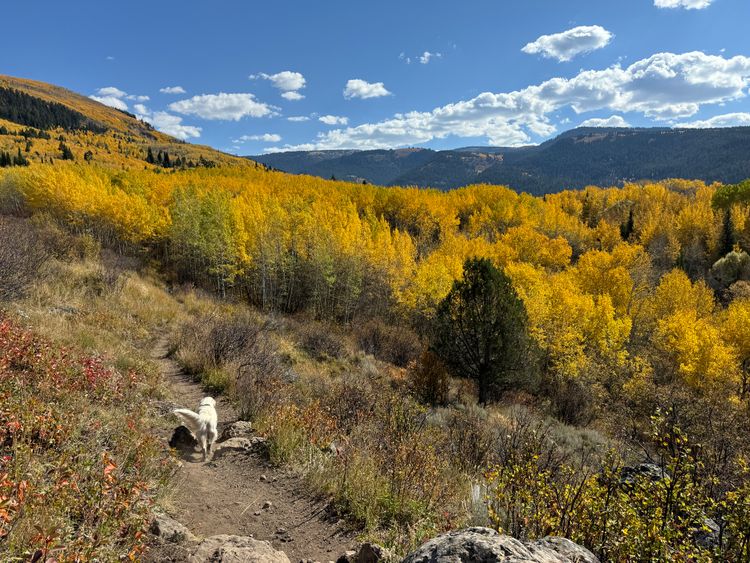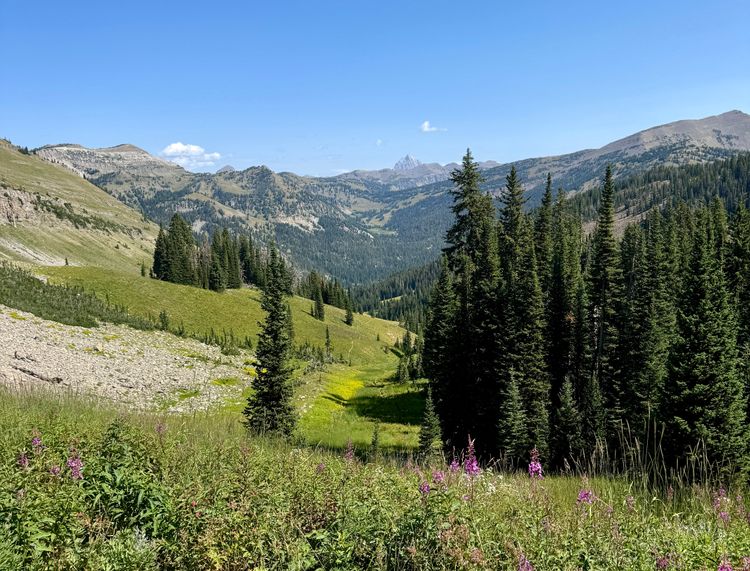A few thoughts on Everest

Available as a podcast on Spotify:
We tell ourselves stories in order to live.… We look for the sermon in the suicide, for the social or moral lesson in the murder of five. We interpret what we see, select the most workable of the multiple choices. We live entirely, especially if we are writers, by the imposition of a narrative line upon disparate images, by the “ideas” with which we have learned to freeze the shifting phantasmagoria which is our actual experience. --Joan Didion, The White Album. Quoted in chapter nine of Into Thin Air.
I finished reading Into Thin Air by Jon Krakauer a couple days ago. I'm about to give away some of the story, so there's my warning if you want to read it first.
The book is Krakauer's account of the disaster on Mount Everest in May, 1996, where eight climbers died over the span of a day. The book is clearly and movingly written, but I was amazed while reading the postscript just how controversial it appeared to be (and probably still is) after its release. I expected a sober description of the tragedy and to get a sense of what it's like to go for the highest summit in the world, but the ending gives way to an acrimonious fight over the narrative. Like many arguments, the core of it is a disagreement on basic facts: Who was where when, who talked to whom, and whether conversations actually happened. The memories of each participant are made somewhat suspect by the pernicious effects of altitude, which does strange and terrible things to the human psyche. If there's a theme to Into Thin Air, it's delirium.
Anatoli Boukreev, a guide for Scott Fischer's Mountain Madness expedition which attempted the summit on the same day as Krakauer's, hated his portrayal in the book. Into Thin Air suggests that Boukreev abandoned climbers he should have shepherded on the deadly descent from the summit. I will say that Krakauer doesn't lay all of the blame at Boukreev's feet and my main takeaway from his account was that many factors led to the fatal outcome. Perhaps most importantly, the decision of Rob Hall (leader of the Adventure Consultants expedition of which Krakauer was a member) not to turn his climbers back from the summit at the prearranged go-back time. There was also the traffic jam at Hillary Step, where three expeditions bottlenecked and frittered away precious time on summit day. All the same, Boukreev took his perspective to print through the author G. Weston DeWalt. Their book, The Climb, hit the shelves later in 1997. Krakauer writes in his postscript “DeWalt—who oversaw the research, wrote The Climb, and has assumed the role of Boukreev’s spokesman—undertook the derogation of Into Thin Air with notable energy and enthusiasm. He has tirelessly expressed his view of my book—and my character—in print and radio interviews, on the Internet, and in personal letters to family members of those who died on the mountain.” DeWalt called into question Krakauers's journalistic integrity, saying that Boukreev's quick descent ahead of other, less-experienced climbers, some of whom died in the ensuing blizzard, was part of a plan he'd arranged with Fischer and that Krakauer hadn't bothered to mention this. Krakauer fires back that DeWalt talked to none of the people present who had critical views of Boukreev and who remembered no such conversation or plan. The whole thing is still more complicated and emotional, since Boukreev died in 1997 during an avalanche on Annapurna, just after he and Krakauer had begun to patch things up.
But Krakauer doesn't let himself off the hook for some of the tragic events on the climb in 1996 either. The lack of oxygen at more 26,000 feet above sea level (the Death Zone) is so debilitating, even after weeks of acclimatization, that almost any exertion leaves you feeling drunk and clumsy. Krakauer faults himself for causing undue grief over his false initial statement that one of his fellow climbers, Andy Harris--a thirty-one year old guide on the Adventure Consultants expedition, had made it down to camp after summiting. Krakauer had been sitting on top of the final icy and steep descent off of the ridge on the route back to Camp Four (the highest camp at 26,000 feet) and claimed to have a brief conversation with Harris, who asked for directions back to the tents. Krakauer pointed them out and Harris attempted to descend the icy slope, lost control and tumbled to the bottom. Miraculously he was unhurt, and Krakauer saw him wobble back toward camp. When Jon made it back to camp too, he informed others present that Harris was safe. This report made it all the way back to Harris' partner in New Zealand. However, another member of the expedition woke Krakauer later to tell him that Harris was not in his tent. Confused and disoriented, Krakauer retraced the steps of the man he'd seen descend the icy incline off of the ridge. While searching, he found a lone set of tracks leading away from camp toward the edge of the Lhotse Face (a 4,000 foot drop) and assumed, in the whiteout conditions, that Harris may have, in fact, fallen to his death. This is what Krakauer reported in his initial article for Outside magazine.
Turns out this was all in error. In the aftermath, Krakauer determined that the man he spoke with on the ridge was not Harris at all, but another climber named Martin Adams, who described to Krakauer his conversation with an unknown climber on top of an icy sheet that sounded almost identical. Krakauer writes:
“For two months I’d been telling people that Harris had walked off the edge of the South Col to his death, when he hadn’t done that at all. My error had greatly and unnecessarily compounded the pain of Fiona McPherson; Andy’s parents, Ron and Mary Harris; his brother, David Harris; and his many friends. Andy was a large man, over six feet tall and 200 pounds, who spoke with a sharp Kiwi lilt; Martin was at least six inches shorter, weighed maybe 130 pounds, and spoke in a thick Texas drawl. How had I made such an egregious mistake?”
Given Krakauer's utter exhaustion at that point in the trek and the stupefying effects of the altitude, it's easy to see how this could all happen. To this day, Harris' remains have not been found.
Aside from the controversy arising over its version of the facts and timeline, I found Into Thin Air to be an inspiring read. Though bleak, Jon and the other surviving members of the expedition, such as Beck Weathers (who essentially rose from the dead), overcame incredible despair and exhaustion to make it back home. Themes about overcoming adversity, especially circumstances this adverse, hold a special appeal for me.
It might be the wrong takeaway, but Into Thin Air makes me want to join a mountaineering expedition. I'm not sure if Everest is in my future, but certainly something like the Grand Teton, Mount Rainier, Shasta, or even Denali. Mountain climbing has a hook to it that's easy to understand: It's achievement in a very distilled form, especially in places where humans weren't meant to survive. I've realized in flying airplanes, skiing and other similar endeavors that the risk gives the adventure meaning. Without it, there's no achievement.
Also, in case you're wondering, you can still summit Everest with an Adventure Consultants expedition. This one runs $69,000 and spans 63 days. So, not for the faint of heart or thin of wallet.
Everest has also seen a huge increase in climbers since Krakauer's ascent in 1996. Tens of thousands of summits by some 6000+ individuals. My guess is that Into Thin Air and the IMAX movie Everest had something to do with that.





